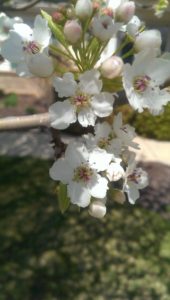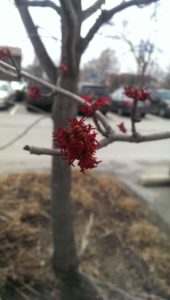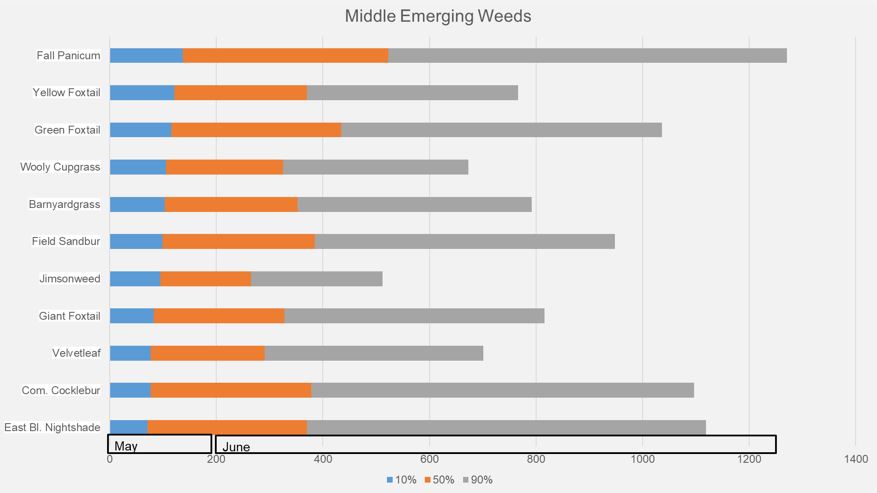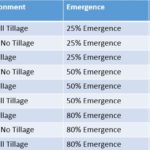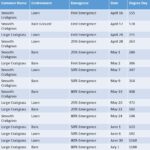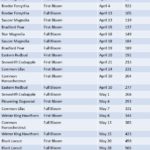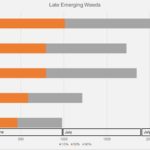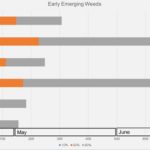Fill in the blank: Apply crabgrass preemergence herbicide when____________is in bloom.
If you said forsythia, you would be correct. Most of us have been told the answer to this for many years, but have you ever thought to yourself, ‘Is it true?’
There are many ways that people make decisions on when to apply herbicides. Some of you may use growing degree-days, phenological cues (Figs. 1 and 2), or are you the one that says, ‘I always put down my preemergence (PRE) herbicides on March 15th’? If you are the latter, there is a good chance that you spray a great deal of postemergence (POST) herbicides because of the weeds you missed with the PRE application.
So, what exactly are phenological cues? Phenology is defined as the study of cyclic and seasonal natural phenomena, especially in relation to climate and plant and animal life. The use of phenology is applicable in many applications, including insect emergence and development, bloom dates, weed development and germination, and more. Continuing with our example of applying crabgrass PRE according to the timing of forsythia flowering, this is the utilization of this method of phenological cues to time the germination of a weed. Research has long demonstrated that plants break bud, germinate, and flower based on growing degree days. We can time these events to consistently apply preemergence herbicides at the correct time to prevent emergence by observing bud break and flowering of ornamental plants.
Utilizing growing degree-days to time phenological cues gives an approximation of the soil temperatures (which is a factor of what determines the timing of the germination of the weed seeds). Growing degree-days (GDD) are calculated by finding the mean temperature for the day. You do this by adding the high and low temperature and divide by two to find the mean. That number is then subtracted from the base temperature (usually 40o or 45o F for many ornamental species) to get the GDD for each day. We typically use between 35o and 50o F for the temperatures in which GDD’s are accumulated. After an accumulation of these GDD’s plants will begin to break bud, flower, produce seeds, etc. This number varies within species, which is why it is important to have an idea of the GDD’s to time these phenological cues. There are calculators online that can be used in determining the amount of GDD’s currently. A couple of recommended sites are: http://www.gddtracker.net/ or https://www.oardc.ohio-state.edu/gdd/.
Weed germination varies greatly by species, and sometimes even between ecotypes. Some weeds will complete germination within a few weeks, such as kochia (Fig. 3),
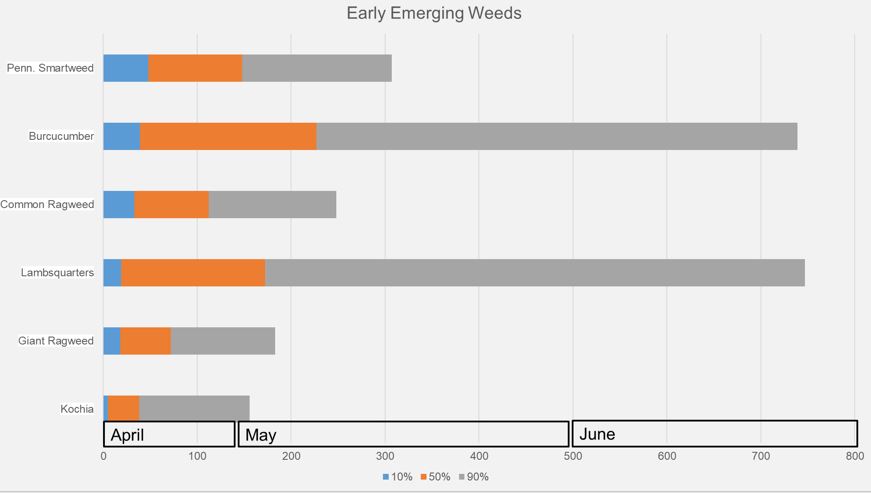
Figure 3. Early emerging weeds based on growing degree days. Blue is 10% germinated, orange is 50% germinated, gray is 90% germinated. Adapted from Werle et.al. (2014).
while others can take months, such as fall panicum (Fig. 4),
or ivyleaf morningglory (Fig. 5).
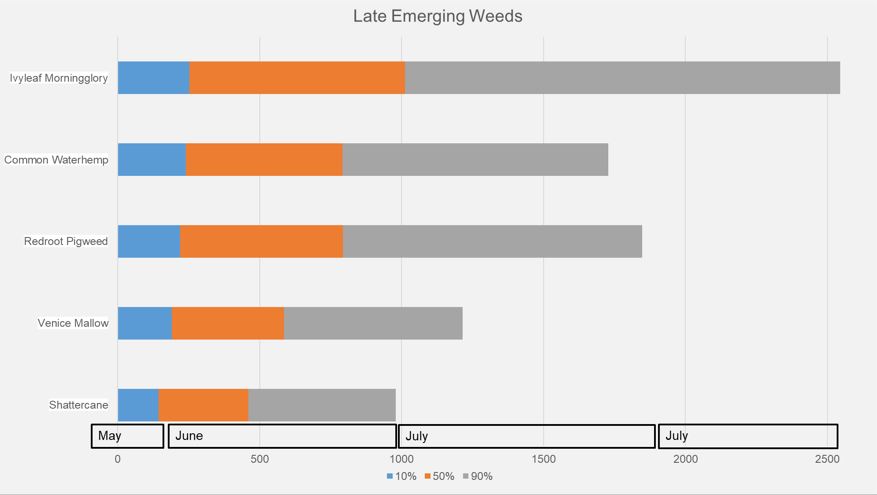
Figure 5. Late germinating weeds based on growing degree days. Blue is 10% germinated, orange is 50% germinated, gray is 90% germinated. Adapted from Werle et.al. (2014).
The longer germinating species can be more difficult to control due to the breakdown of the herbicide in the soil. To aide in increasing the longevity of your preemergence treatment, a split application can be utilized. A split application is applying half your product early and the other half about a month later.
As a reminder, remember that the most effective nursery and landscape weed control programs should rely on PRE as the primary chemical control method. By reducing the amount of POST, phytotoxicity chances are reduced, money is saved by decreased labor inputs, and the weed seed bank is reduced. Remember that PRE must be applied PRIOR to weed germination or they are ineffective.
The figures and charts in this publication should be helpful in scheduling and planning your spring weed control program. As of the release of this article, silver maple is in bloom in West Lafayette, IN. I suspect most everything will be in a ‘holding pattern’ or ‘suspended animation’ until we begin to receive more warm weather later next week.
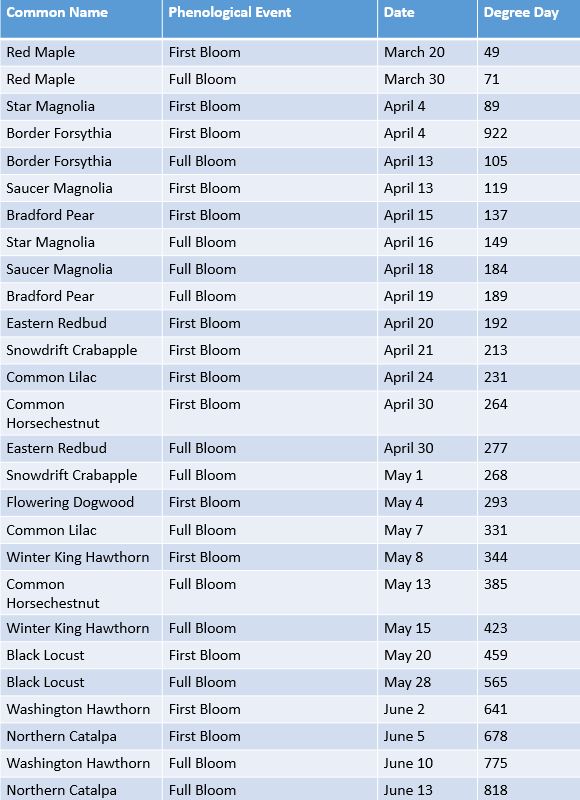
Table 1. Common ornamental plants bloom times based on growing degree days. Adapted from Cardina et.al. (2011).
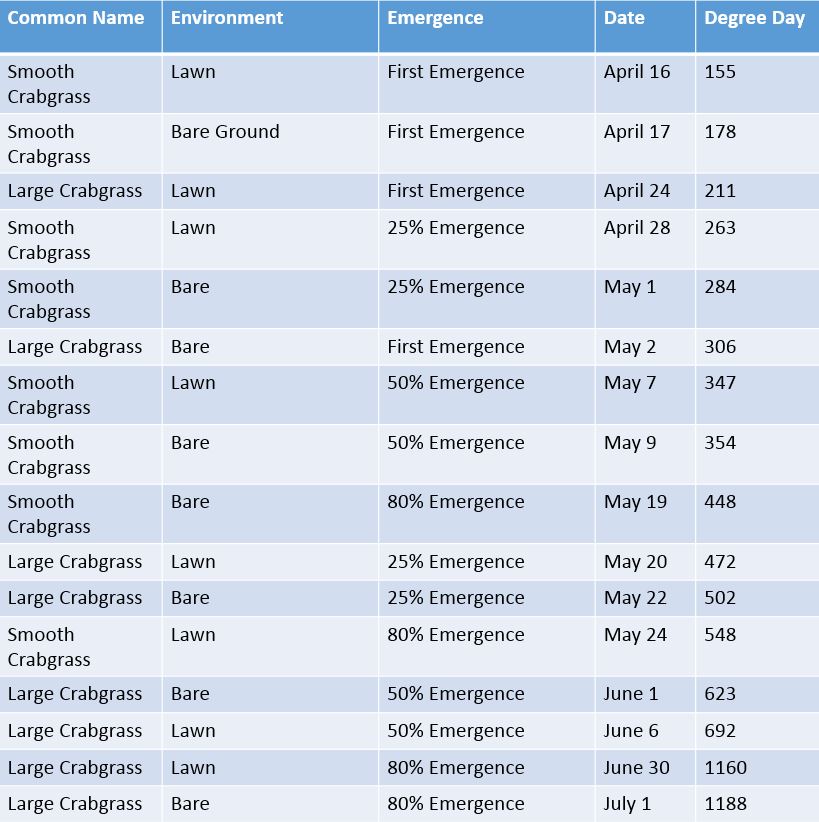
Table 2. Using growing degree days to predict germination of large and smooth crabgrass. Adapted from Cardina et.al. (2011).
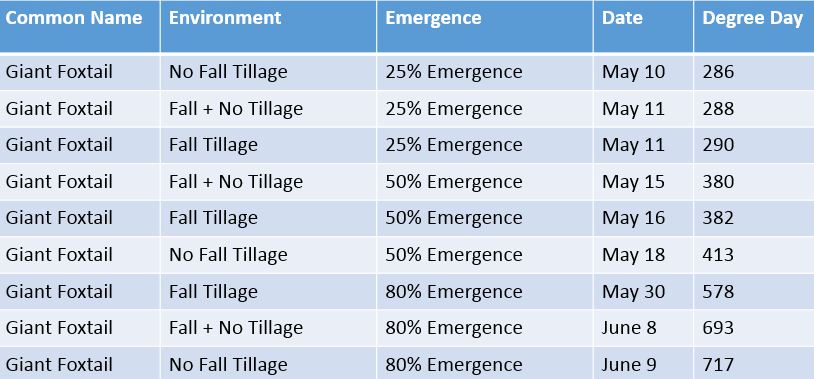
Table 3. Giant foxtail germination based on growing degree days in tilled vs. no-tilled areas. Adapted from Cardina et.al. (2007).
If you are a nursery or landscape company that would like to discuss your weed control program, please contact me at daniel38@purdue.edu.
References:
Cardina, J., Herms, C.P., Herms, D.A., and Forcella, F. 2007. Evaluating Phenological Indicators for Predicting Giant Foxtail (Setaria faberi) Emergence. Weed Science Society of America. 55(5). Pgs. 455-464.
Cardina, J., Herms, C.P., and Herms, D.A. 2011. Phenological Indicators for Emergence of Large and Smooth Crabgrass (Digitaria sanguinalis and D. ischaemum). Weed Technology. 25(1). Pgs. 141-150.
Myers, M.W., Curran, W.S., VanGessel, M.J., Calvin, D.D., Mortensen, D.A., Majek, B.A., Karsten, H.D., and Roth, G.W. 2004. Predicting Weed Emergence for Eight Annual Species in the Northeastern United States. Weed Science. 52(6). Pgs. 913-919.
Werle, R., Sandell, L.D., Buhler, D.D., Hartzler, R.G., and Lindquist, J.L. 2014. Predicting Emergence of 23 Summer Annual Weed Species. Weed Science. 62(2). Pgs. 267-269.
- Table 3. Giant foxtail germination based on growing degree days in tilled vs. no-tilled areas. Adapted from Cardina et.al. (2007).
- Table 2. Using growing degree days to predict germination of large and smooth crabgrass. Adapted from Cardina et.al. (2011).
- Table 1. Common ornamental plants bloom times based on growing degree days. Adapted from Cardina et.al. (2011).
- Figure 5. Late germinating weeds based on growing degree days. Blue is 10% germinated, orange is 50% germinated, gray is 90% germinated. Adapted from Werle et.al. (2014).
- Figure 4. Middle germinating weeds based on growing degree days. Adapted from Werle et.al. (2014).
- Figure 3. Early emerging weeds based on growing degree days. Blue is 10% germinated, orange is 50% germinated, gray is 90% germinated. Adapted from Werle et.al. (2014).
